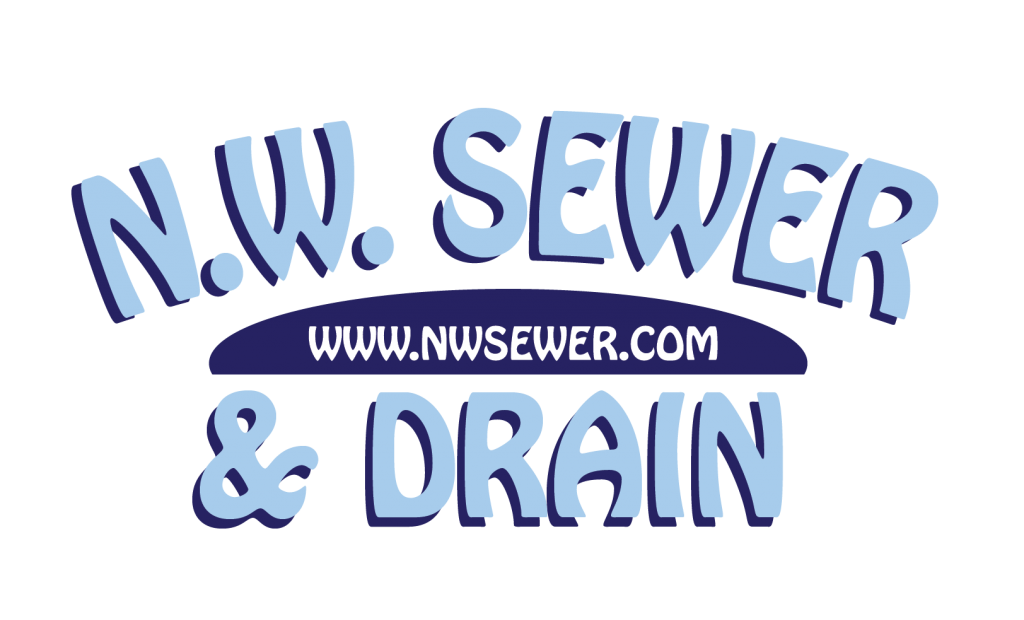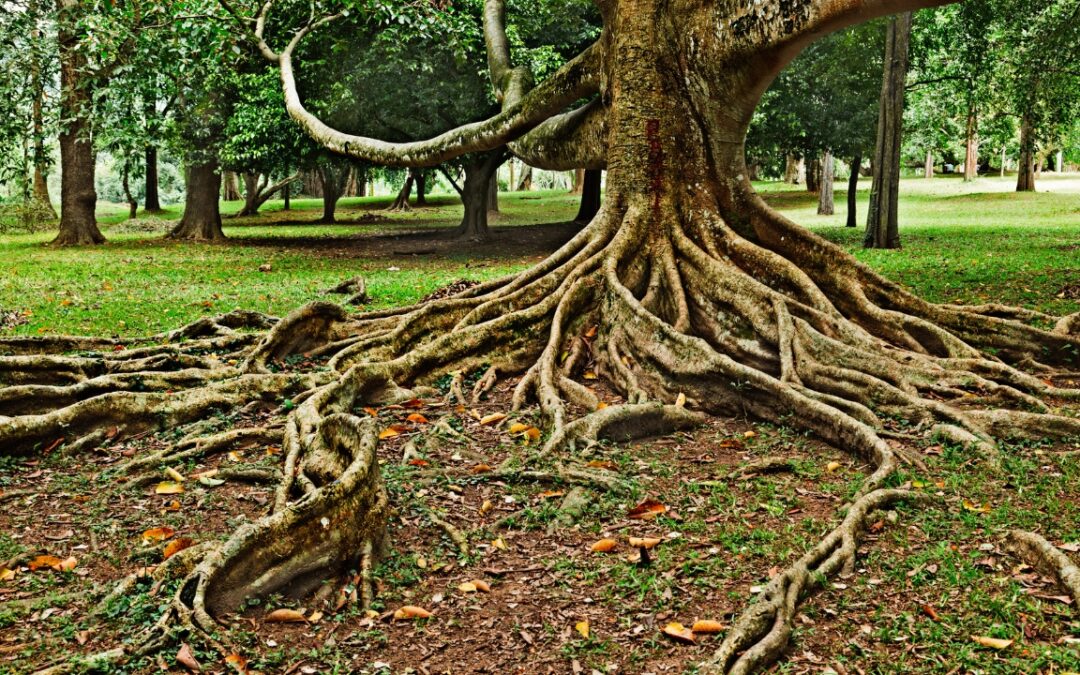For Seattle area residents, a lush, green landscape is practically a birthright. Towering evergreens, vibrant maples, and flowering dogwoods – all contribute to the city’s signature charm. But beneath this picturesque surface lurks a potential plumbing and sewer system nightmare: tree roots.
These determined underground explorers can wreak havoc on your sewer system, causing clogs, breaks, and even sewage backups. At N.W. Sewer & Drain, we’ve been keeping Seattle’s sewer lines flowing freely for years and, in the process, we’ve seen firsthand the damage tree roots can inflict.
Trouble Down the Drain: The Most Common Causes of Residential Sewer Line Woes
Your sewer line, the unsung hero of your plumbing system, was designed to whisk away waste without a fuss. But like any mechanical system, it can face challenges. Over time, changes in the soil and other developments can create problems.
Here’s a look at some frequent culprits behind residential sewer line issues:
- Clogs: The Unwanted Guests
One of the most common cause of sewer woes is a good old-fashioned clog. Grease, wipes (even those labeled “flushable”), feminine hygiene products, and pretty much anything else besides toilet paper can build up over time, hindering proper flow.
- When the Ground Shifts: Pipe Damage
The earth beneath your home isn’t always stable. Shifting soil, excessive moisture, or freezing and thawing ground can crack, misalign, or even collapse sewer pipes.
- Age and Corrosion Take Their Toll
Sewer lines, especially those made from materials like clay or cast iron, can deteriorate over time. Corrosion weakens the pipes, making them more susceptible to cracks, leaks, and collapse.
- Bellied Pipes: A Saggy Situation
Improper installation or ground movement can cause a section of the sewer line to sink, or “belly”, creating a low point where waste accumulates and clogs form.
- Leaky Joints: A Broken Seal
The seals connecting sewer pipes can deteriorate or become dislodged, allowing wastewater to leak out and potentially contaminate the surrounding soil.
By understanding these common causes, you can be more vigilant about preventing sewer line problems. Regular drain cleaning, avoiding flushing improper materials, and keeping an eye out for signs of trouble (slow drains, sewage backups) can help you nip these issues in the bud before they become major headaches.
However, tree roots are an issue that is beyond the scope of most homeowner’s ability to resolve. And it can become a major issue if not addressed.
The Root of the Problem: Tree Root Intrusion
Tree roots, ever thirsty for water and nutrients, can wreak damage to your sewer lines. They’ll grow into and through cracks or joints, growing larger over time and eventually causing blockages or even pipe collapse.
Why Are Tree Roots So Attracted to Your Sewer Lines?
Trees, like all living things, need water to survive. And almost every tree draws water through its roots. So, imagine you’re a tree root, tasked with finding water to survive and thrive. A constant source of moisture, like a slightly leaky drain pipe, can become a prime target.
- Moisture Magnet: Sewer lines are a constant source of moisture thanks to the wastewater they carry. This is an irresistible siren song for roots seeking hydration, especially during Seattle’s drier months.
- Path of Least Resistance: Older sewer lines might have cracks, gaps, or loose joints. These imperfections become an open invitation for roots to squeeze through and establish a foothold inside the pipe.
- A Feast for the Taking: Sewage contains organic matter that roots can break down and absorb as nutrients. It’s like a delicious all-you-can-eat buffet hidden underground.
While this may be great for the trees, once inside the pipe, those roots keep growing, filling the space and causing a variety of problems.
Six Signs That Your Sewer Line Has a Root Problem
When tree roots infiltrate your sewer lines it can be a silent nightmare, gradually causing extensive damage that leads to costly repairs. Tree root infiltration often starts subtly, but it can escalate quickly.
Here are some red flags to watch out for:
- Slow Drains: The first sign is usually slow-draining toilets, sinks, and tubs. As roots grow, they restrict the flow of wastewater through the pipe.
- Frequent Clogs: Partial blockages caused by roots can lead to frequent clogs in your drains. These clogs can be more challenging to clear with traditional methods like plungers.
- Gurgling Sounds: If you hear gurgling noises coming from your drains, it’s a sign that air or water is struggling to flow freely through the pipes. This could be caused by a root blockage.
- Sewage Backups: In the worst-case scenario, roots can completely block the sewer line, leading to sewage backups in your home. This is a messy and unsanitary situation that requires immediate professional attention.
- Uneven Lawns and Cracked Foundation: As roots grow and exert pressure, they can cause the ground above the sewer line to sink or become uneven. In extreme cases, significant root growth can even cause cracks in your foundation.
- Sewer Gas Odors: If you detect a persistent sewage smell in your drains or around your house, it could be a sign that roots have damaged the sewer line, allowing sewer gases to escape.
Taking Action: Solutions for Root-Infested Sewer Lines
If you suspect tree roots are causing problems in your sewer line, don’t wait until you have a major backup on your hands: call a professional.
Diagnosing and resolving a root-infested sewer line requires expertise and specialized equipment. A licensed technician from N.W. Sewer & Drain can assess the situation, identify the location of the roots, and recommend the best course of action.
Some of the solutions that can be implemented include:
- Mechanical Root Removal: This involves using a cable with a cutting blade attachment to sever the roots inside the pipe. This method is effective for smaller root problems but may not be a long-term solution for aggressive tree species.
- Hydro jetting: This technique uses a high-pressure water jet to blast away roots and clear blockages. Hydro jetting is a powerful and effective way to remove roots, but it’s crucial to ensure the pipes are in good condition before using this method.
- Trenching and Pipe Replacement: In severe cases where the roots have caused significant damage to the sewer line, it might be necessary to excavate the pipe and replace it entirely.
- Chemical Root Treatment: Chemical root killers can be injected into the sewer line to prevent new root growth. However, these chemicals can be harsh and should only be used by a qualified professional.
Preventing Future Root Infiltration: Proactive Measures
While it is true that we live in a DIY culture here in the U.S., and folks in the greater Seattle area are certainly resourceful and capable, some home maintenance tasks require skills, equipment, and tools that are a bit beyond the reach of the average homeowner.
However, there are some actions you can take to help prevent issues such as tree root invasion of your sewer lines
- Regular Sewer Line Inspection: Having your sewer line inspected by a professional with a video camera every few years can help detect root problems early on, before they cause major damage.
- Maintain Healthy Trees: Proper pruning and tree care can help control root growth and prevent them from becoming overly aggressive.
- Use Root Barriers: There are specialized root barrier products that can be installed around sewer lines to physically prevent roots from penetrating the pipes.
Partnering with N.W. Sewer & Drain for Healthy Sewer Lines
At N.W. Sewer & Drain, we understand the importance of a healthy and functional sewer system. Our team of experienced plumbers is equipped with the latest technology and expertise to handle any root-related issue, from minor blockages to complete sewer line replacements.
In addition to tree root removal, we offer a variety of services to keep your sewer line running smoothly, including:
- Drain Cleaning: At N.W. Sewer & Drain, we provide a drain cleaning service that encompasses both efficiency and economy.
- Video Sewer Line Inspection: We can use a high-resolution camera to see inside your sewer line and pinpoint the exact location and extent of root intrusion.
- Trenchless Pipe Repair: Whenever possible, we utilize trenchless sewer repair methods that minimize excavation and disruption to your property.
- Pipe Descaling: Pipe descaling is a process that utilizes water pressure to eliminate hardened debris, mineral deposits, and corrosion from sewer and drain pipes, effectively clearing accumulated rust and minerals from the inside surfaces of water, drainage, or sewer pipes.
Don’t let tree roots wreak havoc on your Seattle home’s plumbing system. Contact N.W. Sewer & Drain today for a free consultation and let our experts keep your sewer line flowing freely. We’re here to ensure your home’s plumbing system remains healthy and functional for years to come.




